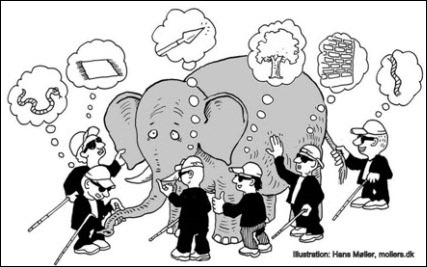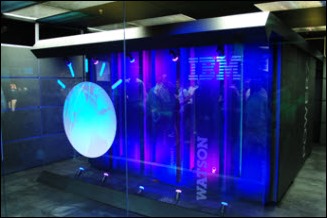DOCtalk with Dr. Gregg 9/26/16
Vendor Apologies Work
This Saturday morning, as usual, I got up very early and started my typical routine, which includes checking my EMR to see what labs, prescription refill requests, consultant notes, and ER or urgent care notes may have come through since the night before. Only problem was, this morning, as compared to every other Saturday morning since we started on our current EMR, something was wrong – very, very wrong.
Not only couldn’t I access my EMR, I couldn’t even get to the sign-on page. (Yes, it’s a browser-based system.) All I could see when I tried to open the login screen was a blank, totally white page. Hmmm … that’s different …
I tried a couple of tricks in that browser with no luck. Well … maybe it’s a browser issue, I thought. Went to browser 2 … same problem. Hmmm …
All vendors have periods on downtime, you know, for system maintenance and upgrades and whatnot. However, before any scheduled downtime, most vendors notify their clients, as ours always does. Maybe I missed just such a notice thought I, so I double-checked my emails, including Junk and Spam folders. Nada. Hmmm, hmmm …
Well, glitches happen, my coffee hasn’t kicked in yet, and maybe I’m not really awake and am just dreaming. Maybe I’ll just go on about some business financial stuff (bills – ugh), run through emails, and then double back to this in a while.
However, an hour or two later, the same blank white browser page kept staring me down. “Maybe there is a system problem” now became my number-one thought.

Before I began to panic with dreadful doom-and-gloom thoughts, I decided to send the EMR support folks an email detailing what was happening on my end. Knowing I’m in the Eastern Time Zone and that they are West Coasters, I figured they may take a bit to respond – you know, wake up, grab coffee, etc. – so I sent the email and proceeded onto the aforementioned doom-and-gloom mental scenarios, such as:
- What if my EMR vendor has unexpectedly gone under, just shut the doors and shuttered the Web access? (Unlikely. They just raised a snootful of investor capital.)
- What if the system has had an irreparable glitch, maybe a total system failure? (Doubtful. They use some pretty great system architecture. Plus, at least some redundancies are in place to prevent total loss.)
- What if hackers have breached the system and are holding our data captive for some ungodly sum of ransom? (Prob’ly not. That investor money still wouldn’t make them as likely a target as many other, more prominent and likely more cash-rich, EMR vendors out there.)
- What if I somehow, for whatever the reason, we lost all access to all of our patient records? (Naw. But, still, a very scary mental picture came to mind, if only for a fleeting, though rather frightening, instant.)
OK, so I played the game of “Fear Factor” in my head and decided it might be best to walk away for a bit and give the support folks a chance to respond. Otherwise, I could envision doom-and-gloom overtaking my day, and it’s SATURDAY! No way I’m wasting a lovely, end-of-summer weekend on HIT anguish and angst.
After some workout time, some dog time, and some home puttering time, I returned to find that my EMR was fully back online, and that support had sent me a response email to say the system was back, and that it was “very unprecedented” and they had “put measures in place to ensure this will not happen again.” They also extended “sincerest apologies.”
OK, the world is once again spinning in greased grooves, and I go on about my patient-related morning duties with no signs of any lingering digital hiccup. My fears have abated, but my curiosity is still nagging away wondering what had actually occurred. Thus, later in the day, I responded to the support person’s email that I had received asking if she’d mind letting me know what exactly had “problem-ized” the system.
I didn’t hear back. Not Saturday. Not Sunday. No biggie, as I’m sure they have better things to do than explain their issues to some little trench grunt. Still, curiosity nagged a bit.
Come Monday, though, my curiosity quotient was fully addressed. In my email inbox, I received – and I’m sure all other clients of this EMR did as well – a wonderful email not only providing a full-blown apology for this “first time in [EMR’s] history that the service has been down for anywhere near this length of time,” but also a sufficiently detailed description of the problem. (Apparently there was a “system infrastructure upgrade” that was not expected to cause any downtime or service interruption whatsoever. Ah, the best laid plans …) It was the first time in their entire corporate history that such an unexpected and lengthy disruption had ever occurred.

But – and here’s the best part – the email didn’t end there, nor even with some politically-correct, corporate-speak apology. No, instead they proceeded to list important addresses to this issue should such an unintended disturbance reoccur:
- First, such a “system infrastructure upgrade” would be addressed in future so that such surprises were avoided. Additional redundancies were being deployed as well;
- Second, they started a public “status webpage” to communicate application status and any communications or solution estimates in real time;
- Third, they instituted a dedicated emergency phone number that will be monitored by in-house staff (read that as “not outsourced”), because they understood that the “inability to talk to someone when you aren’t able to access your records is very stressful and has a great impact on your practice;”
- Fourth, they offered a very sincere-sounding apology, directly from the co-founders;
- And, fifth, and what was especially high on my “Well, Ain’t That Cool” list, they sent us the personal cell phone numbers of both of the co-founders to use until the 24/7 emergency line was fully implemented!!
That last one takes commitment to your clients, personal integrity, and a bit of moxie to float out the cell numbers of the top brass for any old trench grunt to use. (I promise, guys: I’ll try never to abuse it.)
I hope this very cool response, apology, and good-faith gesture sets a standard for any and all other HIT vendors to emulate. Stuff happens, to say it politely, but it’s the response to the “stuff” that lets clients know how much – or how little – you care.

From the trenches…
“If God doesn’t destroy Hollywood Boulevard, he owes Sodom and Gomorrah an apology.” – Jay Leno

Dr. Gregg Alexander, a grunt in the trenches pediatrician at Madison Pediatrics, is chief medical officer for Health Nuts Media, an HIT and marketing consultant, sits on the board of directors of the Ohio Health Information Partnership, and is the semi-proud author of “Monsters Don’t Fart!”
Contacts
Jenn, Mr. H, Lorre, Dr. Jayne, Dr. Gregg
More news: HIStalk, HIStalk Connect.
Get HIStalk Practice updates.
Contact us online.
Become a sponsor.









The article about Pediatric Associates in CA has a nugget with a potentially outsized impact: the implication that VFC vaccines…